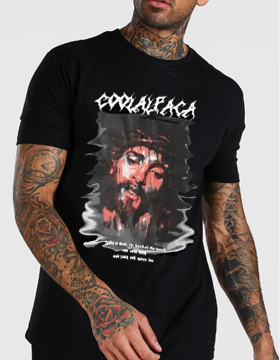Understanding Minimum Order Quantities (MOQs): A Guide For Apparel Manufacturing
Understanding Minimum Order Quantities (MOQs): A Guide For Apparel Manufacturing
1.Understanding Minimum Order Quantity (MOQ)
2.Pros
3.Cons
4.How to Calculate Minimum Order Quantity?
5.Impact of MOQ on Inventory Management
6.Strategies for Managing MOQ
7.Conclusion
8.FAQs
In the world of e-commerce, one term holds a significant position in apparel manufacturing: Minimum Order Quantity (MOQ). This technical term describes the smallest number of units per product that customers must purchase to complete an order.
Manufacturers or wholesalers set this requirement to ensure products are sold in bulk, which helps maintain a seamless relationship between supply and demand. For clothing manufacturers, understanding the intricacies of MOQ is crucial to keeping production smooth and costs manageable.
Let's delve into the world of MOQ and learn about its significance in balancing supply chain efficiency and customer satisfaction.
Understanding Minimum Order Quantity (MOQ)
Minimum Order Quantity (MOQ) plays a crucial role in defining production boundaries, inventory management, and pricing strategies. For example, if a clothing manufacturer sets an MOQ of 100 pieces, you must order at least 100 units to meet their requirement.
Understanding MOQ goes beyond knowing this technical term; it's about optimizing production processes and minimizing per-unit costs. Additionally, MOQ impacts inventory management significantly. For clothing manufacturers, maintaining optimal inventory is vital to meet customer demand while reducing the risk of overstocking.
Moreover, pricing strategies often depend on MOQ thresholds. By comprehending the implications of MOQ, clothing manufacturers can better balance efficiency and profitability.
Pros
MOQs offer several benefits to both retailers and manufacturers:
Retailers: MOQs help manage inventory by reducing overstocking risks. They also provide leverage in negotiating with manufacturers or distributors for larger purchases.
Manufacturers and Wholesalers: MOQs help manage production costs, enhancing profitability by allowing bulk production. They also assist in forecasting production demand, improving production planning.
Cons
MOQs also present challenges for retailers and manufacturers:
Retailers: High MOQs limit product variety, reducing the ability to offer diverse options and respond to changing fashion trends. This can lead to missed sales and increased financial risk if products don’t sell.
Manufacturers: High MOQs can result in overproduction, leading to excessive inventory and high associated costs.
How to Calculate Minimum Order Quantity?
There is no universal formula for calculating MOQ, as it varies based on business needs. Generally, the more you purchase from a supplier, the lower the MOQ becomes. Making informed decisions involves understanding these dynamics and choosing suppliers accordingly.
Impact of MOQ on Inventory Management
MOQs significantly affect inventory management for both retailers and manufacturers.
High Minimum Order Quantity
High MOQs require maintaining substantial inventory, tying up working capital and warehouse space, leading to increased holding costs and potential obsolescence. However, they can reduce administrative costs by allowing bulk savings on materials.
Low Minimum Order Quantity
Low MOQs can lead to higher unit costs due to reduced economies of scale and may require frequent ordering and closer inventory monitoring. This can result in deadstock if products do not sell, increasing holding costs.
Bottom Line Minimum Order Quantity
Balancing between high and low MOQs, the bottom line MOQ allows businesses to optimize inventory by ordering sufficient quantities without overcommitting resources. This helps manage holding costs while ensuring product availability and customer satisfaction.
Strategies for Managing MOQ
To manage MOQ effectively and mitigate its impact on inventory and supply chain management, retailers and manufacturers can adopt the following strategies:
1.Timely Manufacturing: Align production schedules with future forecasts to minimize excessive inventory risks.
2.Negotiation With Suppliers: Negotiate terms with suppliers to balance cost efficiency and inventory management.
3.Forecasting Demand: Use historical sales data, market trends, and customer demand insights to predict future needs and avoid overordering.
4.Dropshipping: Partner with dropshipping suppliers to manage inventory without MOQ constraints.
Conclusion
In conclusion, Minimum Order Quantity (MOQ) defines the minimum quantity of items a customer must purchase in a single order. Its impact on inventory management in the apparel industry is significant, whether dealing with high, low, or bottom line MOQs. By implementing strategies like supplier negotiation and dropshipping, businesses can maintain a competitive edge in the fashion industry.
FAQs
What is MOQ in the supply chain?
MOQ refers to the minimum quantity a supplier requires you to purchase in a given time.
What is the difference between MOQ and EOQ?
MOQ is the minimum amount a supplier will sell, while EOQ is the ideal order quantity to balance ordering and holding costs.
What does MOQ stand for?
MOQ stands for Minimum Order Quantity, indicating the least number of units a supplier or manufacturer requires in a single order.


